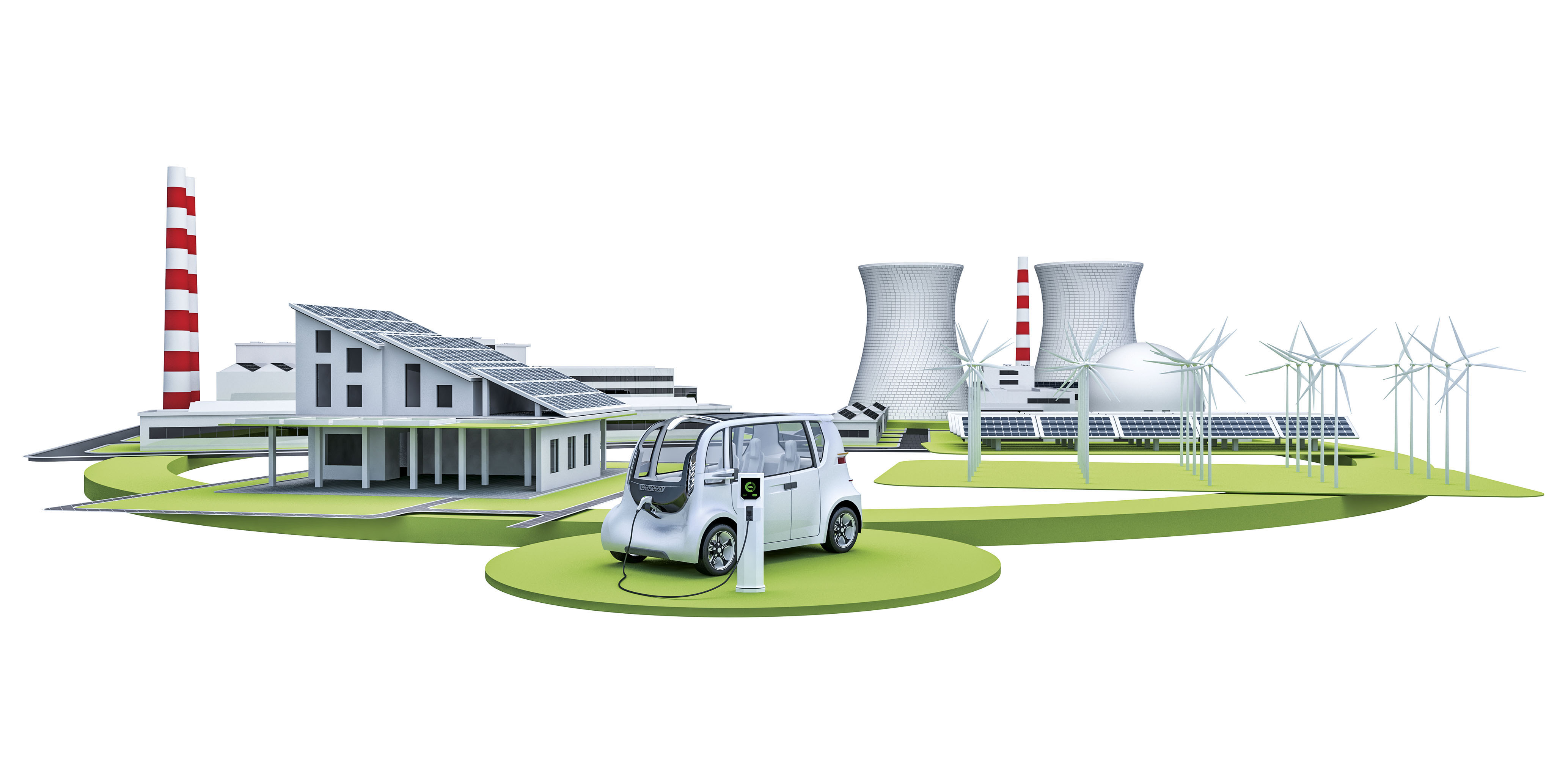Smart Concepts instead of Copper Cables
Interoperable communication modules facilitate smart charging and save on investments
Power consumption is growing due to the increasing number of electric vehicles. Infrastructure expansion is expensive. What is needed is a solution that reliably covers the power demand of electric vehicles while ensuring that the costs for necessary investment stay on an acceptable level. This is exactly what smart charging promises: smart control of charging processes keeps the power grid in balance while ensuring that vehicle batteries are recharged in time. The concept depends on having interoperable communication modules in all components.
At the moment, it is still relatively rare to see electric vehicles on the roads. But if the planned massive growth in the number of such vehicles were to materialize, power grid stability will probably become a major issue at the latest in three to five years. By then, the existing power infrastructure could come up against its limits. After all, the charging stations have to be provided with charging capacity for several tens of kilowatts per vehicle. More copper is one possible solution, but it takes lots of effort and money to install new cables. The answer therefore consists in expanding the grids where necessary, and using the infrastructure with smart control systems. If digitalization can improve the balance between supply and demand in future, this could save unnecessary costs without leaving electric vehicles idle because their batteries are flat.
However, communication is crucial for this kind of smart charging. “The key functions include the transmission of current tariff tables”, says Ursel Willrett, Senior Technical Consultant for Infrastructure Systems and E-Mobility at IAV. “Among others, they tell the driver how many cents he has to pay at the moment per kilowatt-hour of electricity, based on a certain charging rate.” It all depends on the capacities available in the power grid. When things get tight, the tariff tables have to be adjusted. Drivers then wanting to recharge their batteries may have to accept a reduced charging capacity or a higher price. Tariff tables must also be provided and constantly updated for the reverse process of feeding power from the battery into the grid.

Communication platform for smart charging applications
Besides tariff tables, the smart communication system also has to provide the basis for charge control, fee billing and the payment system. In other words, all parties must be connected with each other: customers, charging infrastructure operators, e-mobility providers, electricity suppliers, clearing houses for billing processes and OEMs. “In future, we’ll need a platform for smart charging applications where all stakeholders can share information”, says Willrett. For example, the platform should allow e-mobility providers to manage queues and always provide their customers with the necessary charging capacity in time. As with cell phones, drivers should be able to roam between various providers, recharging their vehicles with power at any charging station and receiving just one bill.
For services like this to work, there have to be interoperable communication modules in all components (including vehicles and charging stations; power companies and e-mobility providers would also need them). Interoperability is the fundamental prerequisite in the new market for smart charging services. The standards already exist, such as ISO/IEC 15118 and IEC 61851-1 for data exchange between vehicle and charging station, and IEC 61850, IEC 63110 and OCPP for communication between charging station and “secondary actors” such as electricity suppliers or grid operators. Access to home energy management systems (HEMS) is covered by the SPINE, SEP 2.0 and Echonet Lite standards. “All these standardized protocols can be used to implement smart charging functions”, says Willrett.
IAV develops communication platforms and applications
IAV develops both communication platforms and smart charging applications. “For a home energy management system, for example, we have developed the application and the protocol for charging at home”, reports Willrett. “Depending on the current availability of power from the solar PV system, the electricity is used either to charge the vehicle battery or to supply power for consumers in the home.” In just a few years, new communication systems could make smart services like this available on a large scale. Car drivers could then stipulate that the battery always has to be fully charged at seven o’clock in the morning, for instance. The vehicle would then negotiate the best tariff and could react flexibly, even to short-term changes in the electricity price, bringing the costs down for the motorists while ensuring better utilization of the power grids. Current charging infrastructure systems usually only offer static control of the charging current: some are even restricted just to switching the power on or off. The communication platforms introduce smart grid applications for effective steady-state and dynamic control of recharging processes.
